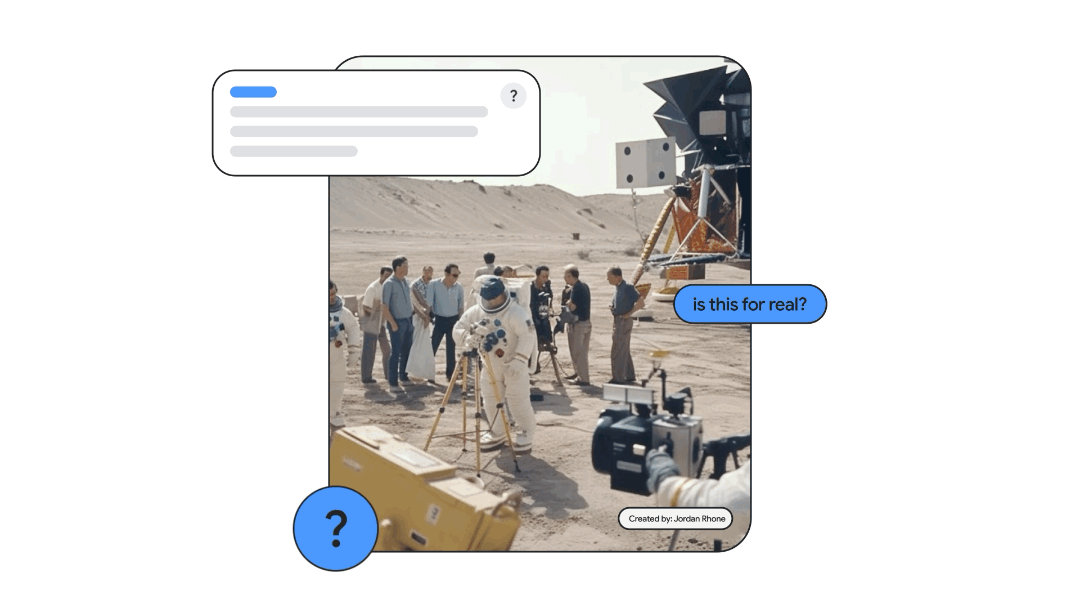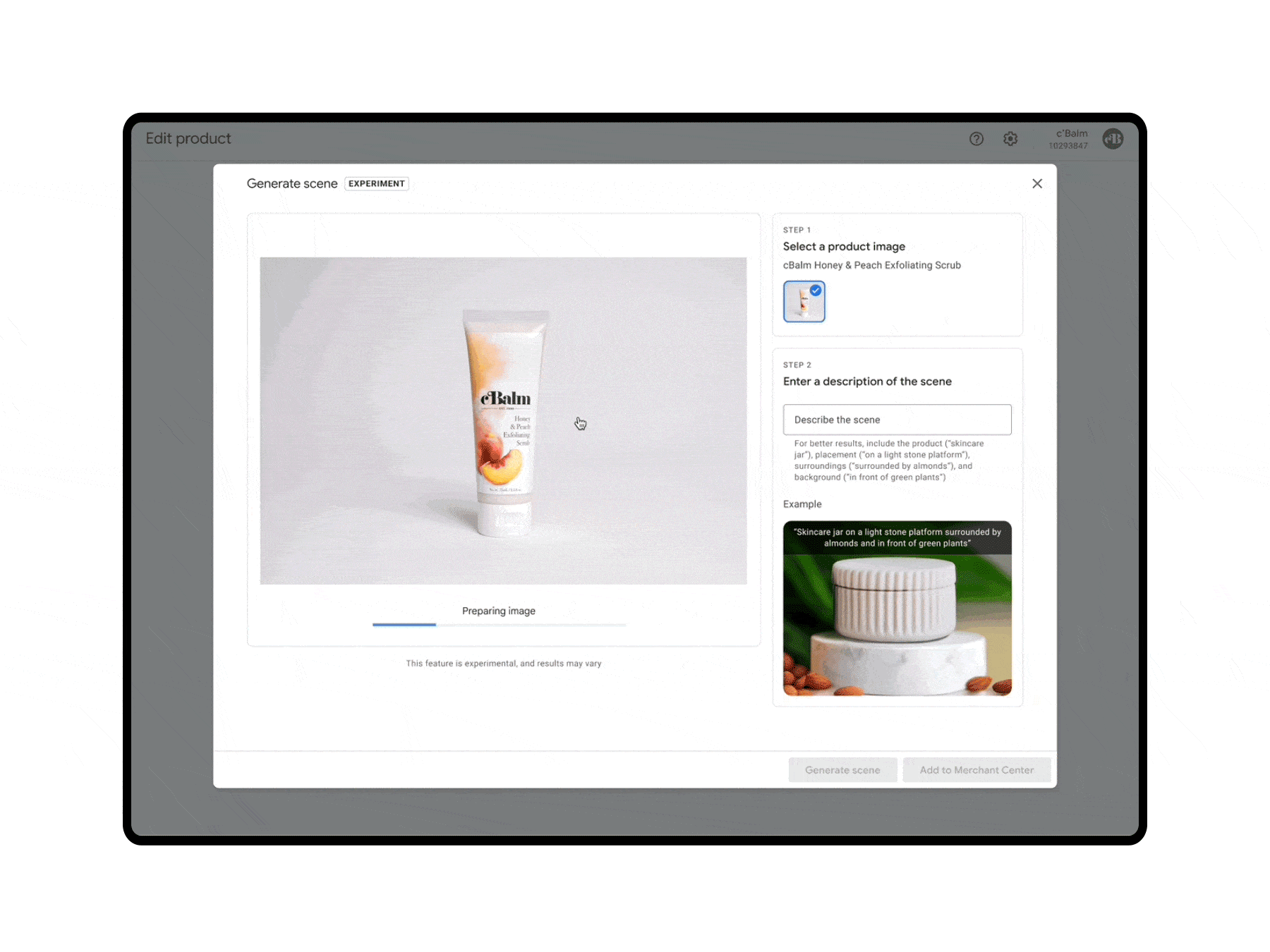Forget carpe diem, Google seized the May this month with a slew of updates coming from I/O and Google Marketing Live 2023; including a view at project Magi and new features coming to Search and Google Ads. There’s a lot to cover, so may I jump into the updates?
In this article, we cover the following key updates from May:
- Google’s new Search Generative Experience.
- New Search Features.
- INP to replace FID in Core Web Vitals.
- Helpful Content updates.
- The new Topic Authority system launches.
- Google Marketing Live key points.
- The latest on Meta’s AI Sandbox.
SEO Market Updates
Google Unveils Search Generative Experience
Last month we heard rumblings of an AI-powered search engine being produced by Google and this month we got to see what it looks like.
Those of you lucky enough to make it through the Google Labs waitlist will have probably played around with the new engine, previously known as project Magi.
In the blog announcing the engine, Google said they are “taking more of the work out of searching, so you’ll be able to understand a topic faster, uncover new viewpoints and insights, and get things done more easily.”

In the previews, we can see an AI-generated answer located above the search results with a big label expressing that “Generative AI is experimental” aka if the result tells you something stupid, don’t blame us!
Clicking the expand button takes you to a deeper response from the AI and there’s even the opportunity to take the AI into conversational mode where users can ask more about the topic you’re searching.
If you’re an online shopaholic, you can get some generative help to give you the “full picture when you’re shopping, making even the most considered and complex purchase decisions faster and much easier.”
The AI will provide you with “noteworthy factors to consider and products that fit the bill” when you’re searching for a product. It will also show product descriptions, up-to-date reviews, ratings, and product images.
Google says that this is because the AI is built on Google’s Shopping Graph, “which has more than 35 billion product listings”.
The good news is that the generative search includes a link to publishers, unlike little brother Bard, meaning that website traffic shouldn’t take a huge hit.
This new search experience isn’t a million miles from the Google Search we know and love today, however the AI integration is quite exciting. We don’t think this will affect the SEO landscape anytime soon but we will keep our ear to the AI-generated streets.
Google Add New Features to Search
Whilst Google is developing their AI-powered search, their old search engine is still getting new features in the form of ‘perspectives’, ‘about this image’, and ‘AI-generated image labels’.
Perspectives
We had our first look at perspectives back in March and now we get to see even more of it.
Perspectives works as a filter that lets searchers refine their search results to show more personalised content such as videos or blogs.
From this new screenshot, we can see the example search ‘how to make friends in a new city’. After hitting the perspectives filter, the search results show video content from YouTube as well as Reddit forums.

About This Image
Similarly to Google’s ‘about this result’ feature for text-based results, ‘about this image’ will show searchers when an image, and similar images, were first indexed. It will also show where the image was originally posted and where else the image is being used across the web.
Here it is in action:

AI-generated Image Labels
With the increasing plight of AI imagery taking the web by storm, Google is giving site owners the opportunity to mark an image on their site as AI-generated.
Google said that they are “not there yet” in ability to mark AI imagery algorithmically, so they are giving the power to site owners with this new meta data label.
This will be only available for image content, but who would admit to using AI-generated text anyway?
INP to Replace FID as Core Web Vitals Metric
During Google I/O it was announced that Interaction to Next Paint (INP) will replace First Input Delay (FID) in Core Web Vitals from March 2024.
INP is a metric that indicates the responsiveness of a page.
Google wrote:
When an interaction causes a page to become unresponsive, that is a poor user experience. INP observes the latency of all interactions a user has made with the page, and reports a single value which all (or nearly all) interactions were below. A low INP means the page was consistently able to respond quickly to all—or the vast majority—of user interactions.”
Here’s a timeline of the changes:

Helpful Content System Algorithm Update Incoming
A new update for the helpful content system is on its way, Google announced. On the update Google wrote:
Last year, we launched the helpful content system to show more content made for people, and less content made to attract clicks. In the coming months, we’ll roll out an update to this system that more deeply understands content created from a personal or expert point of view, allowing us to rank more of this useful information on Search.”
The update aims to reward content that is, dare I say helpful, rather than content that was designed purely to rank well in SERPs. Google said that this is part of their “ongoing effort to reduce low-quality content and make it easier to find content that feels authentic and useful in search.”
Related Topics Filter to Hit Desktop Search Results
After being integrated into mobile search at the backend of 2022, Google is bringing the related topics filter to desktop search.
Take a look at it in action:
The update continues Google’s mission to make search easier and more relevant for users, bringing them to results they might not have reached previously.
Google Completes Final Mobile-first Indexing Switch
After six and a half years, Google has confirmed they have finished moving sites over to mobile-first indexing.
Mobile-first indexing means that your site will be crawled from the perspective of a mobile browser and using that version of the page for indexing and ranking.
If your site hasn’t been moved, it likely never will.
New Topic Authority System Launched
In an effort to help searches reach relevant, expert, and knowledgeable content in search and news, Google has announced a “new” system titled “topic authority”.
New is in quotation marks as Google Search Liaison said the system has been used for several years:
Google said that the system was developed to “determine which expert sources are helpful to someone’s newsy query in certain [specialised] topic areas, such as health, politics, or finance.”
On how the system works, Google explained it “looks at a variety of signals to understand the degree of expertise a publication has in particular areas”. These include how notable a source is for a topic or location, influence and original reporting, and source reputation.
Google gave the following example:
Here’s one way topic authority can help in a search: say, for example, there was a flood where you lived. The topic authority signal helps us identify content from publications in that region that regularly cover topics in your city or town and surface them towards the top of your search results. These are likely familiar publications that are trusted voices in the community, even though larger national outlets may be covering the flood as well.”
PPC Market Updates
Google Marketing Live 2023
Google Marketing Live followed suit of I/O with a huge emphasis on AI integration – let’s jump into what’s new.
First up, Google Ads campaigns can now be created with an AI-driven chat within the Ads interface. This will allow for the AI to do some of the heavy lifting when creating a campaign including assistance with asset creation. This integration also means that the AI can also generate assets based on individual queries – making ads more relevant to users.
Pmax also received the AI treatment, adding text and image generation to help create assets for campaigns.
The new Product Studio tool also brings a whole toolbelt of AI goodies to the hands of merchants. Leaning on Google AI, the studio allows users to edit and enhance product imagery including custom product scenes, background removal, and image resolution.

Google also added two new campaign types: video views and demand gen.
- Video view campaigns: if you’re looking to maximise your view, you’re in luck. This campaign will combine skipple in-stream ads, in-feed ads, and Shorts ads to give you the most views for video.
- Demand gen campaigns: using AI to help engage and drive action with consumers across YouTube Shorts, YouTube in-stream, YouTube in-feed, Discover, and Gmail.
Meta Jump on The AI Wagon
Meta are looking to bring generative AI to its advertisers with their new AI Sandbox.
The sandbox brings three new AI features to advertisers including text variation, background generation, and image outcropping:
- Text variation: Entering your copy into the text variation tool results in several suggestions for your ad.
- Background generation: picture the scene, you’ve got a stunning picture of your product on a boring white background. With the background generation tool, you can enter text prompts to describe the ideal background appearance for your image and boom – no more boring white background.
- Image outcropping: this tool allows merchants to adjust assets to fit whatever aspect ratio their heart’s, or campaign’s, desires.
Whilst the sandbox is only available for a small group of advertisers, Meta plans to expand access in July.
Want to learn how these AI tools can enhance your campaigns? Get in touch with Fusion’s team of experts today.
by Jack Bell





